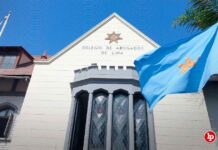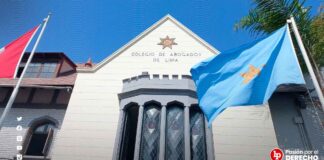Fundamento destacado: 35. (…) The principle whereby a civil claim must be capable of being submitted to a judge ranks as one of the universally «recognised» fundamental principles of law; the same is true of the principle of international law which forbids the denial of justice. Article 6 para. 1 (art. 6-1) must be read in the light of these principles.
Were Article 6 para. 1 (art. 6-1) to be understood as concerning exclusively the conduct of an action which had already been initiated before a court, a Contracting State could, without acting in breach of that text, do away with its courts, or take away their jurisdiction to determine certain classes of civil actions and entrust it to organs dependent on the Government. Such assumptions, indissociable from a danger of arbitrary power, would have serious consequences which are repugnant to the aforementioned principles and which the Court cannot overlook (Lawless judgment of 1 July 1961, Series A no. 3, p. 52, and Delcourt judgment of 17 January 1970, Series A no. 11, pp. 14-15).
It would be inconceivable, in the opinion of the Court, that Article 6 para. 1 (art. 6-1) should describe in detail the procedural guarantees afforded to parties in a pending lawsuit and should not first protect that which alone makes it in fact possible to benefit from such guarantees, that is, access to a court. The fair, public and expeditious characteristics of judicial proceedings are of no value at all if there are no judicial proceedings.
COUR EUROPÉENNE DES DROITS DE L’HOMME
EUROPEAN COURT OF HUMAN RIGHTS
COURT (PLENARY)
CASE OF GOLDER v. THE UNITED KINGDOM
(Application no. 4451/70)
In the Golder case,
The European Court of Human Rights, taking its decision in plenary session in application of Rule 48 of the Rules of Court and composed of the following judges:
Mr. G. BALLADORE PALLIERI, President,
Mr. H. MOSLER,
Mr. A. VERDROSS,
Mr. E. RODENBOURG,
Mr. M. ZEKIA,
Mr. J. CREMONA,
Mrs. I. H. PEDERSEN,
Mr. T. VILHJÁLMSSON,
Mr. R. RYSSDAL,
Mr. A. BOZER,
Mr. W. J. GANSHOF VAN DER MEERSCH,
Sir Gerald FITZMAURICE,
and also Mr. M.-A. EISSEN, Registrar and Mr. J.F. SMYTH, Deputy
Registrar,
Having deliberated in private,
Decides as follows:
PROCEDURE
1. The Golder case was referred to the Court by the Government of the United Kingdom of Great Britain and Northern Ireland (hereinafter called «the Government»). The case has its origin in an application against the United Kingdom lodged with the European Commission of Human Rights (hereinafter called «the Commission») under Article 25 (art. 25) of the Convention for the Protection of Human Rights and Fundamental Freedoms (hereinafter referred to as «the Convention»), by a United Kingdom citizen, Mr. Sidney Elmer Golder. The application was first submitted in 1969; it was supplemented in April 1970 and registered under no. 4451/70. The Commission’s report in the case, drawn up in accordance with Article 31 (art. 31) of the Convention, was transmitted to the Committee of Ministers of the Council of Europe on 5 July 1973.
2. The Government’s application, which was made under Article 48 (art. 48) of the Convention, was lodged with the registry of the Court on 27 September 1973 within the period of three months laid down in Articles 32 para. 1 and 47 (art. 32-1, art. 47). The purpose of the application is to submit the case for judgment by the Court. The Government therein express their disagreement with the opinion stated by the Commission in their report and with the Commission’s approach to the interpretation of the Convention.
3. On 4 October 1973, the Registrar received from the Secretary of the Commission twenty-five copies of their report.
4. On 9 October 1973, the then President of the Court drew by lot, in the presence of the Registrar, the names of five of the seven judges called upon to sit as members of the Chamber, Sir Humphrey Waldock, the elected judge of British nationality, and Mr. G. Balladore Pallieri, Vice-President of the Court, being ex officio members under Article 43 (art. 43) of the Convention and Rule 21 para. 3 (b) of the Rules of Court respectively. The five judges chosen were MM. R. Cassin, R. Rodenbourg, A. Favre, T. Vilhjálmsson and W. Ganshof van der Meersch, (Article 43 in fine of the Convention and Rule 21 para. 4) (art. 43). The President also drew by lot the names of substitute judges (Rule 2l para. 4). Mr. G. Balladore Pallieri assumed the office of President of the Chamber in accordance with Rule 21 para. 5.
5. The President of the Chamber ascertained, through the Registrar, the views of the Agent of the Government and of the Delegates of the Commission on the procedure to be followed. By Order of 12 October 1973, he decided that the Government should file a memorial within a time-limit expiring on 3l January 1974 and that the Delegates should be entitled to file a memorial in reply within two months of the receipt of the Government’s memorial. The President of the Chamber also instructed the Registrar to request the Delegates to communicate to the Court the main documents listed in the report. These documents were received at the registry on 17 October.
The President later granted extensions of the times allowed, until 6 March 1974 for the Agent of the Government, and until 6 June and then 26 July for the Delegates (Orders of 21 January, 9 April and 5 June 1974). The Government’s memorial was received at the registry on 6 March 1974 and that of the Commission – with observations by the applicant’s counsel annexed – on 26 July.
6. The Chamber met in private on 7 May 1974. Sir Gerald Fitzmaurice, who had been elected a member of the Court in January 1974 in place of Sir Humphrey Waldock, took his seat in the Court as the elected judge of British nationality (Article 43 of the Convention and Rule 2 para. 3) (art. 43). On the same day the Chamber, «considering that the case raise(d) serious questions affecting the interpretation of the Convention», decided under Rule 48 to relinquish jurisdiction forthwith in favour of the plenary Court. The new President of the Court, Mr. Balladore Pallieri, assumed the office of President.
7. After consulting the Agent of the Government and the Delegates of the Commission, the President decided, by Order of 6 August 1974, that the oral hearings should open on 11 October.
8. The public hearings took place on 11 and 12 October 1974 in the Human Rights Building at Strasbourg. There appeared before the Court:
– for the Government:
Mr. P. FIFOOT, Legal Counsellor, Foreign and Commonwealth Office, Barrister-at-Law, Agent and Counsel, Sir Francis VALLAT, K.C.M.G., Q.C., Professor of International Law, King’s College, London; formerly Legal Adviser to the Foreign Office, Mr. G. SLYNN, Q.C., Recorder of Hereford, Counsel, and Sir William DALE, K.C.M.G., formerly Legal Adviser to the Commonwealth Office, Mr. R. M. MORRIS, Principal, Home Office, Advisers; – for the Commission:
Mr. G. SPERDUTI, Principal Delegate,
MM. T. OPSAHL and K. MANGAN, Delegates, and
Mr. N. TAPP, Q.C., who had represented the applicant
before the Commission, assisting the Delegates under
Rule 29 para. 1, second sentence.
The Court heard the addresses and submissions of Mr. Fifoot, Sir Francis Vallat and Mr. Slynn for the Government and of Mr. Sperduti, Mr. Opsahl and Mr. Tapp for the Commission, as well as their replies to questions put by the Court and by several judges.
At the hearings, the Government produced certain documents to the Court
AS TO THE FACTS
9. The facts of the case may be summarised as follows.
10. In 1965, Mr. Sidney Elmer Golder, a United Kingdom citizen born in 1923, was convicted in the United Kingdom of robbery with violence and was sentenced to fifteen years’ imprisonment. In 1969, Golder was serving his sentence in Parkhurst Prison on the Isle of Wight.
11. On the evening of 24 October 1969, a serious disturbance occurred in a recreation area of the prison where Golder happened to be. On 25 October, a prison officer, Mr. Laird, who had taken part and been injured in quelling the disturbance, made a statement identifying his assailants, in the course of which he declared: «Frazer was screaming … and Frape, Noonan and another prisoner whom I know by sight, I think his name is Golder … were swinging vicious blows at me.»
12. On 26 October Golder, together with other prisoners suspected of having participated in the disturbance, was segregated from the main body of prisoners. On 28 and 30 October, Golder was interviewed by police officers. At the second of these interviews he was informed that it had been alleged that he had assaulted a prison officer; he was warned that «the facts would be reported in order that consideration could be given whether or not he would be prosecuted for assaulting a prison officer causing bodily harm».
13. Golder wrote to his Member of Parliament on 25 October and 1 November, and to a Chief Constable on 4 November 1969, about the disturbance of 24 October and the ensuing hardships it had entailed for him; the prison governor stopped these letters since Golder had failed to raise the subject-matter thereof through the authorised channels beforehand.
[Continúa…]

![Impedimento de salida: El patrimonio que acumuló la investigada en su cargo de expresidenta, así como los viajes internacionales realizados en el ejercicio de sus funciones y que su hijo trabaje para la ONU en EE. UU., no constituyen factores determinantes de un peligro de fuga (caso Dina Boluarte) [Exp. 00171-2025-5, ff. jj. 7.2.24-7.2.25]](https://img.lpderecho.pe/wp-content/uploads/2025/10/MAZO-BIBLIOTECA-LPDERECHO-218x150.jpg)
![No hay vulneración del debido proceso ni de la tutela procesal efectiva si la denuncia fue admitida, se realizaron diligencias y la recurrente participó e incluso interpuso recurso de elevación [Exp. 00436-2025-PA/TC, f. j. 18]](https://img.lpderecho.pe/wp-content/uploads/2024/03/tribunal-constitucional-4-LPDerecho-218x150.jpg)

![Para la consumación del delito de estafa, no se requiere que el dinero se entregue directamente al estafador, pues puede efectuarse incluso a favor de un tercero [Exp. 01116-2024-PHC/TC, f. j. 8]](https://img.lpderecho.pe/wp-content/uploads/2023/03/tribunal-constitucional-fachada-exterior-tc-1-LPDerecho-218x150.png)
![Derecho de defensa: Cada vez que haya una modificación en la acusación —por devolución—, debe habilitarse nuevamente el plazo de 10 días para que la defensa la absuelva, aun cuando repita sus fundamentos [Exp. 01385-2019-6, f. j. 5]](https://img.lpderecho.pe/wp-content/uploads/2025/07/JUEZA-MAZO-JUZGADO-LPDERECHO-218x150.jpg)

![Ley Orgánica del Registro Nacional de Identificación y Estado Civil (Ley 26497) [actualizada 2025]](https://img.lpderecho.pe/wp-content/uploads/2025/05/Ley-organica-del-registro-nacional-de-identificacion-y-estado-civil1-LPDERECHO-218x150.jpg)
















![Precedente Servir sobre la notificación de los actos emitidos en el PAD en el marco de la Ley 30057 [Resolución de Sala Plena 002-2025-Servir/TSC]](https://img.lpderecho.pe/wp-content/uploads/2024/05/Servir-CAS-LPDerecho-218x150.jpg)
![¿Servidores que estén próximos a jubilarse pueden solicitar teletrabajo? [Informe Técnico 002521-2025-Servir-GPGSC]](https://img.lpderecho.pe/wp-content/uploads/2023/02/trabajadores-pareja-servidores-trabajo-LPDerecho-218x150.jpg)

![Las boletas de pago de los servidores del Estado se encuentran exceptuados de difusión pública dado que, prima facie, contienen datos de la esfera privada; sin embargo, la remuneración global sí corresponde ser publicitada como parte de la transparencia de la entidades del Estado [Exp. 04880-2024-PHD/TC, f. j. 6]](https://img.lpderecho.pe/wp-content/uploads/2023/01/Logo-LP-con-fondo-guinda-LPDERECHO-218x150.png)

![Ley General de Contrataciones Públicas [Ley 32069] (actualizada 2025)](https://img.lpderecho.pe/wp-content/uploads/2025/12/2025-LEY-32069-LIBRO-LPDERECHO-218x150.jpg)
![Elecciones generales 2026: diseño y especificaciones técnicas de las cédulas de sufragio [Resolución Jefatural 000199-2025-JN/ONPE]](https://img.lpderecho.pe/wp-content/uploads/2025/12/Cedulas-de-sufragio-LPDerecho-218x150.png)
![Elecciones generales 2026: instrucciones de los sorteos de ubicación de las organizaciones políticas en la cédula de sufragio [Resolución Jefatural 00198-2025-JN/ONPE]](https://img.lpderecho.pe/wp-content/uploads/2023/01/onpe-elecciones-votos-LPDerecho-218x150.png)
![Código Penal peruano [actualizado 2025]](https://img.lpderecho.pe/wp-content/uploads/2024/05/VENTA-CODIGO-PENAL-LPDERECHO-218x150.jpg)
![Código de Protección y Defensa del Consumidor (Ley 29571) [actualizado 2025] Codigo proteccion defensa consumidor - LPDercho](https://img.lpderecho.pe/wp-content/uploads/2024/05/Codigo-proteccion-defensa-consumidor-LPDercho-218x150.png)
![Decreto Legislativo del Notariado (Decreto Legislativo 1049) [actualizado 2025]](https://img.lpderecho.pe/wp-content/uploads/2025/10/DECRETO-LEGISLATIVO-NOTARIO-1049-2025-LPDERECHO-218x150.jpg)
![Ley Orgánica de Elecciones (Ley 26859) [actualizada 2025]](https://img.lpderecho.pe/wp-content/uploads/2025/05/Ley-organica-de-elecciones-LPDerecho-2025-218x150.jpg)






![[VÍDEO] ¿Quieres postular a la Fiscalía? Estas son las preguntas que hacen en las entrevistas](https://img.lpderecho.pe/wp-content/uploads/2021/10/postular-fiscalia-preguntas-entrevista-LP-218x150.jpg)






![No puede confundirse la exigencia de completitud y especificidad del relato fáctico de una formalización con una exhaustividad extrema —minuciosa, detallada o pormenorizada— de las circunstancias precedentes, concomitantes o posteriores, las cuales, incluso, pueden integrarse en la acusación, siempre que se mantengan los mismos hechos constitutivos del tipo penal [Exp. 49-2025-54, ff. jj. 57-58]](https://img.lpderecho.pe/wp-content/uploads/2024/06/POST-Giammpol-Taboada-Pilco-documento-firmas-generico-LPDerecho-218x150.jpg)

![Para la consumación del delito de estafa, no se requiere que el dinero se entregue directamente al estafador, pues puede efectuarse incluso a favor de un tercero [Exp. 01116-2024-PHC/TC, f. j. 8]](https://img.lpderecho.pe/wp-content/uploads/2023/03/tribunal-constitucional-fachada-exterior-tc-1-LPDerecho-100x70.png)

![TC ordena al Reniec consignar, como apellido materno de una niña, el de la mujer que obtuvo el óvulo de una donante anónima y lo hizo implantar en el útero de otra mujer que dio a luz [Expediente 01367-2019-PA/TC]](https://img.lpderecho.pe/wp-content/uploads/2024/07/tc-y-embarazada-LPDERECHO-100x70.jpg)


![[Vídeo] César San Martín: «Me podrán decir de todo, menos que por odio he resuelto los casos»](https://img.lpderecho.pe/wp-content/uploads/2025/12/BANNER-GENERICO-CESAR-SAN-MARTIN-LPDERECHO1-100x70.jpg)

![Ley General de Contrataciones Públicas [Ley 32069] (actualizada 2025)](https://img.lpderecho.pe/wp-content/uploads/2025/12/2025-LEY-32069-LIBRO-LPDERECHO-100x70.jpg)







